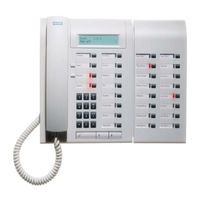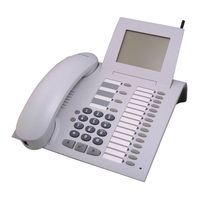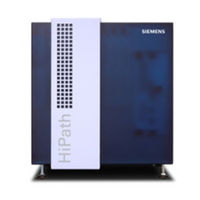
Siemens Hicom 300 E CS Manuals
Manuals and User Guides for Siemens Hicom 300 E CS. We have 6 Siemens Hicom 300 E CS manuals available for free PDF download: User Manual, Operating Instructions Manual, Administrator's Manual
Siemens Hicom 300 E CS User Manual (106 pages)
Siemens Telephones User Guide Telephone HiPath 4000, Hicom 300 E, Hicom 300 H
Table of Contents
Advertisement
Siemens Hicom 300 E CS Operating Instructions Manual (101 pages)
Siemens Telephone User Manual
Table of Contents
Advertisement
Siemens Hicom 300 E CS Administrator's Manual (46 pages)
Brand: Siemens
|
Category: Telephone System
|
Size: 2 MB
Table of Contents
Siemens Hicom 300 E CS Administrator's Manual (46 pages)
Brand: Siemens
|
Category: Telephone System
|
Size: 2.29 MB
Advertisement
Related Products
- Siemens Hicom 300 optiset E Standard
- Siemens Hicom 300 H
- Siemens HICOM 3000 E
- Siemens Hicom 108
- Siemens Hicom 150 E/H
- Siemens Hicom 150 E optiset E advance plus
- Siemens Hicom Office PhoneMail
- Siemens Hicom 150 optiset E advance plus
- Siemens Hicom 150 E optiset E conference
- Siemens Hicom 150 E optiset E advance conference





